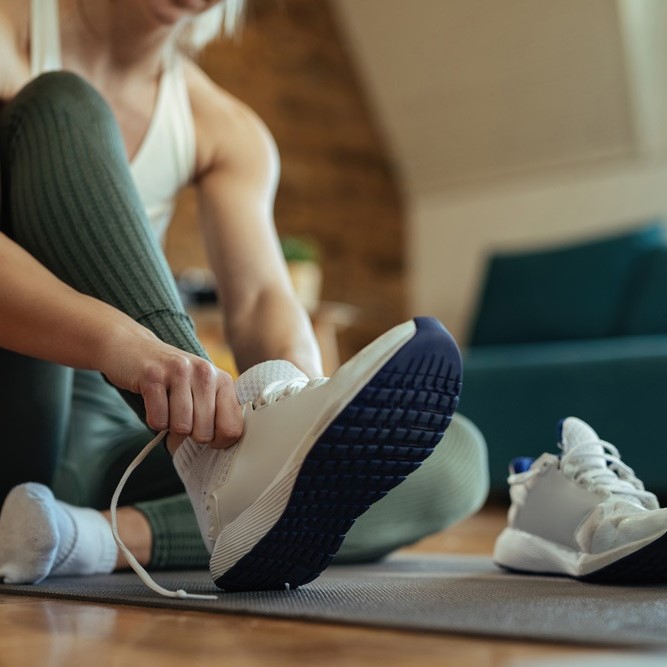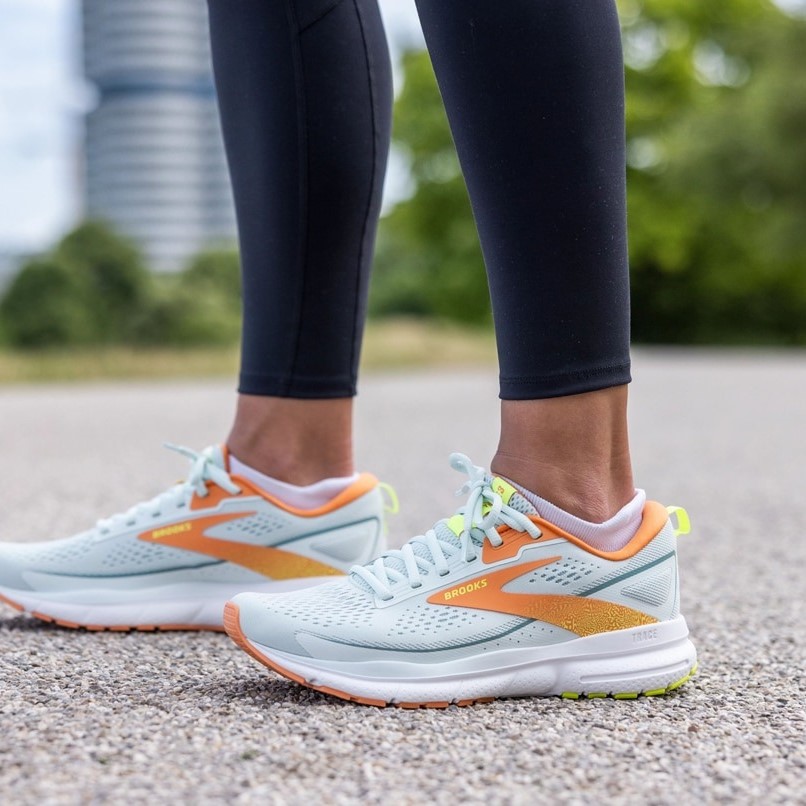Understanding Plantar Fasciitis and Its Impact on Runners
Plantar fasciitis is a common foot condition. It causes pain in the heel and bottom of the foot. This pain usually feels worst in the morning. The plantar fascia is a thick band of tissue. It runs across the bottom of your foot. It connects your heel bone to your toes. Plantar fasciitis occurs when this band becomes inflamed.
Runners often face plantar fasciitis. They put a lot of stress on their feet. Repeated stress can lead to this condition. When you have plantar fasciitis, each step can cause sharp pain. It can make running very difficult.
The severity can range from mild to severe. People with severe plantar fasciitis may even feel pain when not running. It’s important to address the pain. Ignoring it can lead to more serious injuries. It can also affect your gait and posture.
One key way to manage plantar fasciitis is by choosing the right running shoes. The right shoes can help reduce pain. They can also prevent further damage to the plantar fascia. Shoes that provide proper support and cushioning are crucial. They can help absorb impact and reduce stress on the foot.
In the next sections, we will discuss the features to look out for. We will also recommend some top running shoes for plantar fasciitis sufferers. Let’s find the best shoe to help you keep running without pain.
Key Features to Look for in Running Shoes for Plantar Fasciitis
When searching for running shoes for plantar fasciitis, key features become your guide. They determine how well the shoe will support your foot and manage pain. Here are the essential features to consider:
- Arch Support: A strong, supportive arch keeps the plantar fascia stable. It reduces the tension on it when you run.
- Cushioning: Adequate cushioning in the heel and forefoot absorbs the impact. It protects your foot during long runs.
- Heel Support: Look for shoes with good heel cupping. This stabilizes the heel and minimizes stress on the plantar fascia.
- Fit: The shoe should fit snugly but not too tight. It should allow room for movement without slipping.
- Flexibility: Flexibility in the toe area prevents extra strain. But the midsole should be firm to support the arch.
These features work together to ease the burden on your feet. Shoes with these attributes help you run with minimal pain. Always try different models and brands. This helps you find the ideal mix of support, comfort, and fit for your specific needs.
Top Recommended Running Shoes for Plantar Fasciitis Sufferers

Finding the right pair of running shoes for plantar fasciitis is critical. Your shoes should have proper arch support and cushioning. They must be a blend of comfort and functionality. To simplify your search, here’s a list of top recommended options:
- Asics Gel Series: These shoes offer a great mix of cushioning and stability.
- Brooks Adrenaline GTS: Renowned for its supportive fit and cushioned experience.
- Hoka One One Bondi: Known for maximum cushioning and minimal weight.
- New Balance Fresh Foam Line: These provide plush cushioning and superior arch support.
- Saucony Guide Series: They offer a good balance between support and flexibility.
- Nike Air Zoom Structure: Delivers a responsive and stable ride, popular among runners.
Each brand and model comes with unique features. Some focus on heel support, others on arch stability. Always check the specific design for plantar fasciitis. Most importantly, try them on to ensure they feel right. Remember to replace them at regular intervals. This helps avoid the worn-out cushioning which can worsen plantar fasciitis. With the right choice, running can be enjoyable, even with plantar fasciitis.
How to Fit Running Shoes Properly for Maximum Support
Getting the right fit in running shoes for plantar fasciitis is essential. It ensures the maximum support for your feet. Here’s how you can make sure your running shoes fit properly:
- Measure Your Feet: Foot size can change over time. Measure your feet every time you buy new shoes.
- Shop Late in the Day: Feet tend to swell during the day. Shop in the afternoon or evening for the best fit.
- Wear Running Socks: Try on shoes with the socks you will run in. This affects the fit.
- Leave Space: There should be about a thumb’s width of space in the toe box.
- Check the Width: Make sure the shoes are not too tight or too loose on the sides.
- Heel Fit: Your heel should fit snugly, with minimal slippage.
- Walk or Jog in the Store: Test the shoes by walking or jogging around the store.
- Consult a Specialist: A running specialist can suggest the best shoes for plantar fasciitis.
Remember, a proper fit can make a huge difference. It reduces pain and supports your foot where it’s needed most. Take your time to find the right pair and don’t rush the process. This way, you can enjoy running, pain-free.
Importance of Arch Support and Cushioning for Plantar Fasciitis
For those with plantar fasciitis, proper shoe features are more than just comfort; they are a necessity. Sufficient arch support and cushioning are critical when selecting running shoes for plantar fasciitis. Here’s why they’re essential:
- Arch Support: Arch support is vital. It holds the plantar fascia, the flat band of tissue in your foot, in a stable position. This stability is key in lessening tension when running. Without arch support, the plantar fascia bears excess strain with every step. Good arch support can also help correct overpronation. This is when the foot rolls inward too much. Overpronation can lead to more pain and injury.
- Cushioning: Running sends shock waves through your legs. Cushioned running shoes absorb this impact. This protective feature is crucial, especially in the heel area. It helps minimize the jarring forces on the plantar fascia. With proper cushioning, your feet can handle longer distances. They can recover better too. This means you can keep running regularly without adding damage.
These two features, arch support and cushioning, work together. They provide a base that helps to manage and reduce plantar fasciitis symptoms. When choosing running shoes for plantar fasciitis, pay attention to these details. They make a significant difference in your running experience and foot health. Make them a priority on your checklist when shoe shopping. They could be your first step towards a pain-free run.
Insole and Orthotic Options for Additional Plantar Fascia Relief

Finding the perfect running shoes for plantar fasciitis is a crucial step. But sometimes, extra support is necessary. This is where insoles and orthotics come into play. They offer additional relief and can be a game-changer.
- Custom Orthotics: These are made just for you. They match the contours of your feet exactly. They can be costly but are often very effective.
- Over-the-Counter Insoles: These are a more affordable option. They come in many shapes and styles. Look for ones that focus on arch support and heel cushioning.
- Gel Inserts: Gel inserts help absorb shock. They provide extra cushioning for the heel, which can reduce pain.
- Arch Supports: Separate arch support pieces can be added to shoes. They help keep the plantar fascia in a stable position.
- Heel Cups: These focus on supporting the heel. They ensure better distribution of pressure across your foot.
When choosing insoles or orthotics, consider these points:
- Fit: Make sure they fit in your running shoes without making them too tight.
- Arch Type: Match them to your arch type – whether it’s high, low, or neutral.
- Material: Look at what they’re made of. Some materials may be more comfortable or durable than others.
- Activity Level: Consider how often you run. More frequent runners might need more durable options.
Don’t forget to replace insoles and orthotics regularly. Just like shoes, they wear out too. They might also need a break-in period, so give them some time. With the right combination of shoes and additional support, you can keep running pain-free.
Transitioning to New Running Shoes: Tips and Best Practices
Making the switch to new running shoes can be a bit tricky, especially when you’re dealing with plantar fasciitis. To ease this transition and avoid potential discomfort or injury, here are some tips and best practices to follow:
- Introduce Gradually: Don’t make a sudden switch; start by wearing your new shoes for short runs. Gradually increase the distance as your feet adapt.
- Listen to Your Body: Pay attention to any new pains or discomfort. If something feels off, take a step back.
- Alternate Between Old and New: For the first few weeks, alternate between your old and new shoes. This gives your feet time to adjust to the support and cushioning of the new pair.
- Check the Tread: Compare the tread pattern on your old shoes with the new ones. This helps you understand the wear pattern and how it might affect your foot’s strike.
- Break Them In: Walk around in your new shoes during the day. This helps break them in before you run.
- Monitor Mileage: Keep track of the mileage on your shoes. Typically, running shoes should be replaced every 300-500 miles.
- Follow a Replacement Schedule: If you run often, have a schedule for replacing your shoes. This ensures you’re always running with optimal support and cushioning.
By taking these steps, you ensure a smooth transition to new running shoes. It will help keep plantar fasciitis pain at bay and improve your overall running experience. Remember to incorporate the right running shoes for plantar fasciitis into your regimen. This will support your feet and help prevent further injury.
Maintaining Your Running Shoes for Long-Term Foot Health
 \
\
Maintaining your running shoes is crucial for managing plantar fasciitis. Well-cared-for shoes keep your feet in good health. Here are some tips to help extend the life of your running shoes:
- Rotate Your Shoes: Don’t wear the same pair every day. Have at least two pairs and rotate them. This gives the cushioning time to bounce back between runs.
- Keep Them Clean: Dirt and moisture can break down shoe materials. Clean your shoes gently with a soft brush and mild soap.
- Dry Properly: Never put your shoes in a dryer. Let them air dry away from direct heat and sunlight.
- Avoid Extreme Temperatures: High heat can warp your shoes. Store them in a cool, dry place.
- Inspect Regularly: Check for signs of wear in the soles and cushioning. This will tell you when it’s time for a new pair.
By sticking to these practices, you ensure your running shoes offer the best support. They will also be more comfortable for every run. This is vital for those with plantar fasciitis. Remember, your feet’s health depends significantly on your shoe’s condition. Treat them well, and your runs will continue to be enjoyable and pain-free.



 \
\